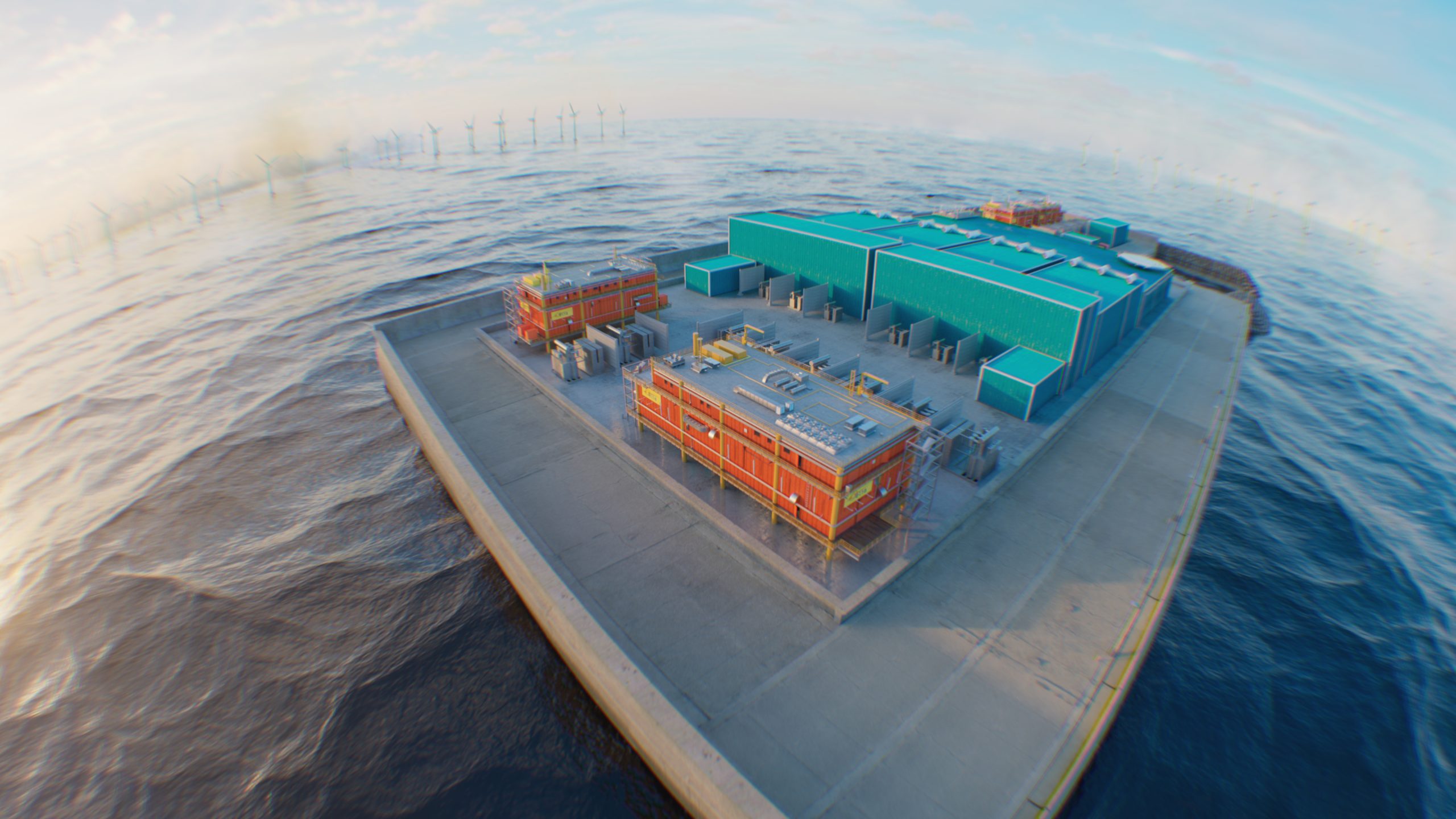Elia, Belgium’s transmission system operator (TSO), has achieved a significant milestone in its pursuit of creating the world’s first artificial energy island. Named Princess Elisabeth Island, this innovative project aims to serve as a pivotal link connecting offshore wind farms and interconnectors to Belgium’s onshore power grid.
Project Background
Princess Elisabeth Island represents a groundbreaking endeavor, with a consortium of two prominent Belgian marine construction companies, DEME and Jan De Nul, at the helm of its construction. Early preparations have already commenced in Vlissingen, the Netherlands, where the concrete foundations, known as caissons, will be constructed for the island. Located approximately 45 kilometers from the Belgian coast, the construction timeline spans two years, kicking off in March 2024 and anticipated completion in August 2026.
The recent approval of an environmental permit for caisson construction at Verbrugge Zeeland Terminals in North Sea Port underscores the project’s advancement.
Also read: Equinor and Ithaca Energy Invest $3.8 Billion in UK Rosebank Project
Innovative Features
Princess Elisabeth Island is poised to be the world’s first artificial energy island to seamlessly integrate both direct current (HVDC) and alternating current (HVAC) technologies. The high-voltage infrastructure on the island will consolidate export cables from wind farms in the new Princess Elisabeth Zone. Simultaneously, it will serve as a hub for future interconnectors with the United Kingdom (Nautilus) and Denmark (TritonLink).
Belgium’s Commitment to Offshore Wind
Belgium’s Federal Minister for Energy, Tinne Van der Straeten, emphasized the country’s leadership in offshore wind and its commitment to accelerating the energy transition. This involves a significant expansion of offshore wind capacity in the Belgian North Sea, the construction of the groundbreaking energy island, and the establishment of new interconnectors with North Sea neighboring countries.
Environmental Considerations
Elia, the project’s driving force, recognizes the importance of considering marine life both above and below the water. The company is committed to Nature Inclusive Design to ensure that ecological sustainability is a core aspect of this innovative venture.
European Energy Hub
Princess Elisabeth Island is not only a significant step in bringing 3.5 GW of additional offshore wind energy ashore but also marks the inception of a European offshore electricity grid. It will be positioned in the Belgian part of the North Sea and will play a pivotal role in the transition to more sustainable energy in the region.
This ambitious project aligns with the EU’s REPowerEU plan, designed to reduce the region’s dependence on Russian fossil fuels by 2027 and work toward the EU’s overarching objective of climate neutrality by 2050. The European Commission is set to provide a substantial subsidy of around €100 million as part of Belgium’s post-COVID-19 recovery plan.
Gateway to Renewable Energy
The primary purpose of Princess Elisabeth Island will be to act as a central hub for interconnectors with the UK (Nautilus) and Denmark (TritonLink). These interconnectors will facilitate the exchange of electricity between countries and connect to “gigantic” offshore wind farms in the North Sea. The project will ultimately grant Belgium access to vast amounts of renewable energy, unlocking the significant offshore wind potential of the North Sea.
To link all future offshore installations to the Belgian high-voltage grid, the project will require 300 km of alternating current cables and 60 km of direct current cables, marking a significant technological advancement in the energy sector.
Princess Elisabeth Island is a testament to Belgium’s commitment to a greener, more sustainable energy future and its vital role in Europe’s broader renewable energy goals.

